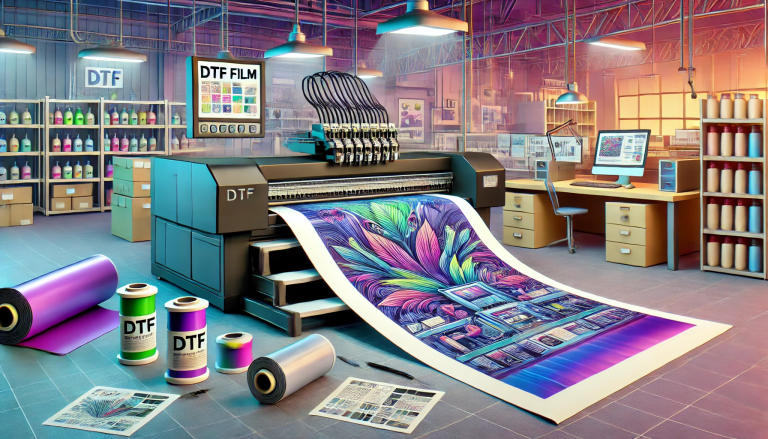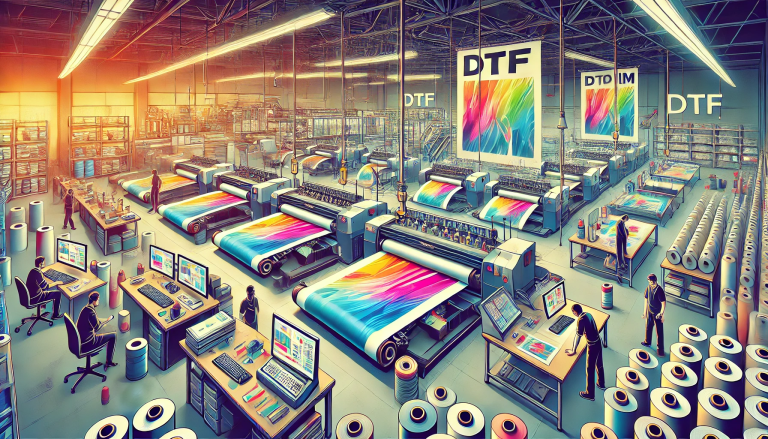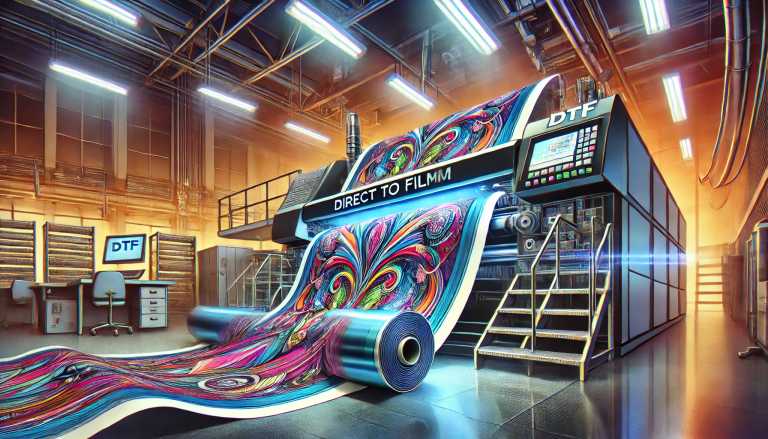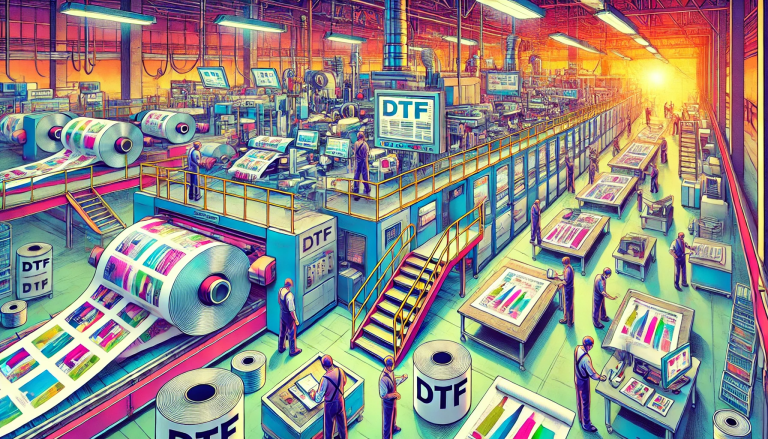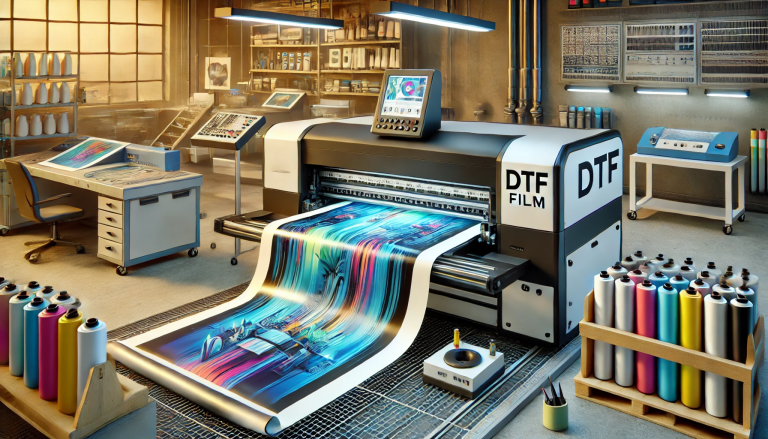“DTF Transfer Films: Lasting Quality for Lasting Memories!” -MAXDTF- A3 L1800 DTF Manufacturer, DTF Film 11×17 Factory, Made in China
1. Understanding DTF Transfer Films
1.1. What Are DTF Transfer Films?
DTF transfer films are specialized transparent films used in the DTF printing process. Designs are printed onto these films using ink, and a layer of transfer powder is applied to absorb the ink. The film is then heated and pressed onto the desired substrate, such as textiles, ceramics, or plastics, transferring the design permanently.
1.2. Types of DTF Transfer Films
DTF transfer films come in various sizes and specifications, with some common types including:
- A3 Size (11.7×16.5 inches): Ideal for medium-sized prints.
- A4 Size (8.3×11.7 inches): Suitable for smaller prints.
- 13×19 Inches (A3+ Size): Larger format for detailed or expansive designs.
Each type is designed to accommodate different printing needs, but their lifespan depends on factors such as storage, handling, and usage.
2. Factors Affecting the Lifespan of DTF Transfer Films
The lifespan of DTF transfer films is influenced by several factors, ranging from material quality to environmental conditions. Below are the key factors that determine how long a DTF transfer film can last:
2.1. Quality of the Film
High-quality DTF transfer films are made from durable materials, such as polyethylene terephthalate (PET), which ensures longevity and resistance to wear. Cheaper or lower-quality films may degrade faster, leading to reduced performance and shorter lifespan.
2.2. Storage Conditions
Proper storage is critical for maintaining the integrity of DTF transfer films. Exposure to extreme temperatures, humidity, or direct sunlight can cause the film to warp, yellow, or become brittle over time. Ideally, films should be stored in a cool, dry place away from heat sources and moisture.
2.3. Handling Practices
Improper handling can damage the film, reducing its lifespan. For example:
- Rough handling or folding the film can lead to cracking or tearing.
- Touching the printed surface can leave smudges or fingerprints, affecting the transfer quality.
- Incorrect loading into the printer can cause jams or damage the film.
2.4. Frequency of Use
How often a DTF transfer film is used also impacts its lifespan. Films that are frequently printed on may wear out faster due to repeated exposure to ink, heat, and transfer powder.
2.5. Environmental Factors
Environmental conditions during the printing process, such as temperature and humidity, can affect the performance and longevity of the film. High temperatures or excessive humidity may cause the film to stick together or degrade prematurely.
3. Best Practices for Maximizing the Lifespan of DTF Transfer Films
To ensure that DTF transfer films last as long as possible, users should follow these best practices:
3.1. Proper Storage
- Store films in a controlled environment with stable temperatures (ideally between 50°F to 77°F (10°C to 25°C)) and low humidity (below 60%).
- Keep films away from direct sunlight, heat sources, and moisture to prevent warping or yellowing.
- Use airtight containers or resealable plastic bags to protect the films from dust and contaminants.
3.2. Careful Handling
- Handle films with clean, dry hands to avoid smudging or staining the surface.
- Avoid folding, creasing, or applying pressure to the film, as this can cause permanent damage.
- Always load and unload the film carefully to prevent jams or tears.
3.3. Optimal Printing Conditions
- Maintain a consistent temperature and humidity level in the printing environment.
- Regularly clean the DTF printer to ensure smooth operation and prevent ink buildup that could affect the film.
- Use high-quality transfer powder and ink to avoid clogging or damaging the film.
3.4. Reusing or Recycling Films
In some cases, properly cared-for DTF transfer films can be reused after cleaning. However, this depends on the quality of the film and the printing process. For single-use films, consider recycling or repurposing them responsibly.
4. Typical Lifespan of DTF Transfer Films
The lifespan of DTF transfer films can vary depending on the factors mentioned above, but generally, they fall into two categories:
4.1. Single-Use Films
Single-use DTF transfer films are designed for one-time printing and transfer. Their lifespan is limited to a single print cycle. While they may not last beyond one use, high-quality films ensure optimal performance during that cycle.
4.2. Reusable Films
Some high-quality DTF transfer films are designed to be reusable. With proper cleaning and maintenance, these films can be used multiple times, extending their lifespan significantly. However, repeated use may reduce their effectiveness over time.
4.3. Average Lifespan
- Single-Use Films: Last for one full printing and transfer cycle.
- Reusable Films: Can last for several cycles (typically 3-5 uses) before performance declines.
5. Signs That a DTF Transfer Film Needs to Be Replaced
Recognizing when a DTF transfer film has reached the end of its lifespan is essential for maintaining print quality. Some common signs include:
- Yellowing or Discoloration: Indicates degradation due to exposure to light, heat, or humidity.
- Cracking or Tearing: Suggests physical damage from improper handling or storage.
- Reduced Ink Adhesion: Indicates that the film’s surface is no longer suitable for printing.
- Poor Transfer Quality: Signals that the film is no longer absorbing transfer powder effectively.
6. Conclusion
The lifespan of DTF transfer films depends on various factors, including material quality, storage conditions, handling practices, and environmental factors. While single-use films are designed for one-time use, higher-quality films can be reused multiple times with proper care. By following best practices for storage, handling, and printing, users can maximize the lifespan of their DTF transfer films and ensure consistent, high-quality results.
As the demand for DTF printing continues to grow, understanding the factors that affect the lifespan of transfer films is crucial for businesses and individuals looking to optimize their printing processes. By prioritizing quality, proper care, and optimal conditions, users can achieve long-lasting prints and minimize waste, contributing to a more sustainable and efficient printing experience.

